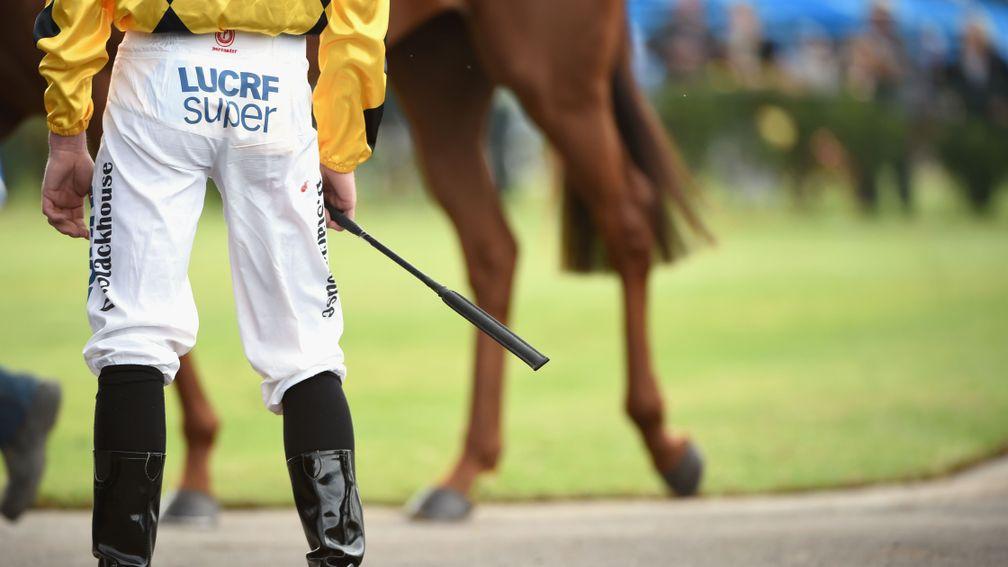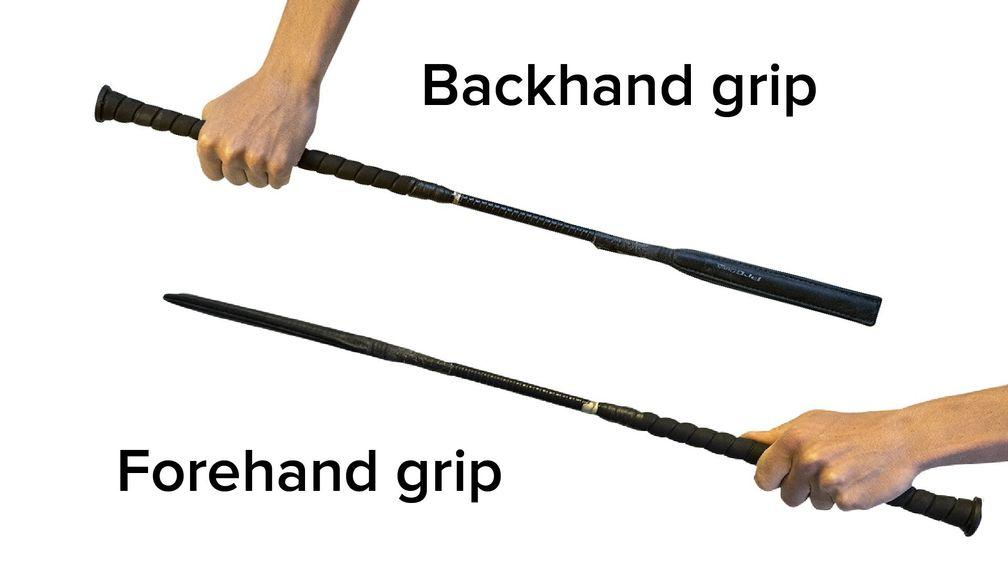'It's going to feel foreign to some' - jockeys react to backhand whip ruling

Jockeys are expected to find it "difficult" and "foreign" to break the habit of using the whip in the forehand position, but the change in rules was widely accepted on Tuesday as a positive for the future of the sport.
New restrictions, set to be implemented in the autumn, will mean riders are permitted to use the whip to encourage horses only in the backhand position.
A forehand hit is when a rider turns the whip and strikes it through the top of their hand, usually in a swinging motion to make contact behind the saddle. Forehand hits are typically more noticeable, while in a backhand strike, which discourages a wider movement from a jockey's arm, it is more difficult to hit a horse with "excessive force", according to the findings in the review.
A shift towards the whip solely being used in the backhand position is becoming increasingly common on an international level, and the Breeders' Cup implemented similar rules for the first time in 2021.
The review noted there would be a "bedding-in" period, but jockeys believe it may prove challenging in the early stages.

Classic-winning rider Sean Levey said: "There will have to be adjustments – anyone in my sort of boat will probably find the adjustment a little bit difficult initially, but at the same time it's only a minor adjustment and jockeys will get used to it.
"You've always switched to the forehand to get that little inch more, and the backhander was always encouragement to a certain degree. That'll now change and it'll ultimately boil down to the response given by the horse to the use of the backhand.
"I thought we were in a good place with the whip as it was, but racing is a sport hugely in the public eye and the whip has always been an issue clouding the sport to a certain degree. I can see why changes will have to be made."
Mick Fitzgerald, who won the Cheltenham Gold Cup and Grand National in his 15-year riding career before joining the ITV Racing team, added: "Jockeys will have to modify their style – if you're somebody who uses it very rarely in the backhand it's going to feel foreign but if you're somebody who uses it only in the backhand it's going to feel great because it won't be any different.
"It'll work for both sets really and hopefully we can make progress and help to make people understand that we only want what's for the greater good of the sport. If we're all singing off the same hymn sheet, it can only be a good thing. If this is what it means so that we can maintain use of the whip, then so be it."
The Professional Jockeys Association (PJA) said riders would require time to adapt to the new rules.
Dale Gibson, the PJA's racing director, said: "The review process has been robust, and there are significant changes which many jockeys will take time to adapt to. The PJA will continue to work with the BHA and other parties during the coming weeks and months to assist all professional jockeys in any aspect of future [whip] usage."
Explained: the difference between the backhand and forehand position
For me the backhand is a fundamental part to building up to a race finish. I'd like to think that more than 99 per cent of the jockeys out there will be confident using the whip in the backhand, but it will just be about getting them to break the habit of putting it in the forehand when they're in a close finish.
The backhand is a lot less offensive to the eye as the whip doesn't come as high and to me it's more of a skill to use it. The forehand is literally a blow, while there's a bit more finesse in gathering a horse up and getting the momentum right before you deploy the whip behind the saddle. It takes more of a sweeping action.
The process of pulling the whip through to the other hand in backhand is a little slower, by that I mean less than two seconds. You put your hands down, you change hands and pull it through in the backhand.
I think you'll see whip use being more refined and it will look more acceptable for anyone outside the sport to understand what it's used for. If the whip is used correctly, with fluency, it all adds to the horse going forwards.
Kevin Darley, former champion jockey
Read these next:
Full story: backhand whip use only and disqualification to be introduced in new whip rules
Reaction: 'It does not go far enough' – charity criticises whip review despite involvement
Reaction: bookmakers seek clarity on 'far from ideal' whip disqualifications

Sign up to receive On The Nose, our essential daily newsletter, from the Racing Post. Your unmissable morning feed, direct to your email inbox every morning.
Published on inBritain
Last updated
- 'He babysits the yearlings and is made for it' - Cheltenham king Coole Cody still bossing the field in retirement
- Olive Nicholls to replace injured Freddie Gingell on leading December Gold Cup contender Il Ridoto
- Leading trainers Nicky Henderson and Dan Skelton among those to declare runners for Windsor's jumps comeback
- Here are four outsiders to keep on side at Cheltenham today - including a 20-1 shot
- Cheltenham ground quickens to good to soft, good in places on Thursday with weekend weather set fair
- 'He babysits the yearlings and is made for it' - Cheltenham king Coole Cody still bossing the field in retirement
- Olive Nicholls to replace injured Freddie Gingell on leading December Gold Cup contender Il Ridoto
- Leading trainers Nicky Henderson and Dan Skelton among those to declare runners for Windsor's jumps comeback
- Here are four outsiders to keep on side at Cheltenham today - including a 20-1 shot
- Cheltenham ground quickens to good to soft, good in places on Thursday with weekend weather set fair